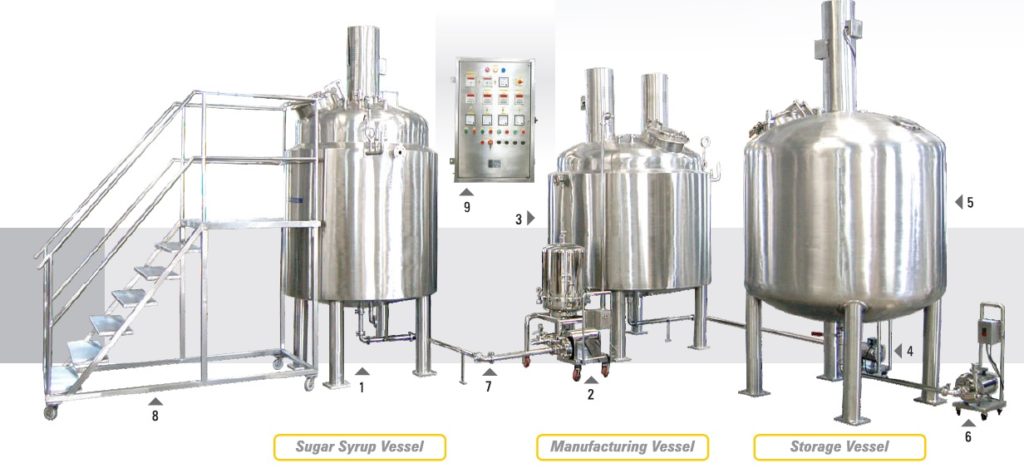Introduction to the Liquid Storage Tank
Silent sentinels of liquid storage tanks play an important role in modern civilization’s infrastructure. From the preservation of precious water resources to vital industrial fluids, these vessels are the heart of energy, manufacturing, agriculture, and healthcare sectors among others. These tanks are important not only because they hold liquids but also because of their roles in maintaining a continuous supply chain, mitigating risks, and ensuring safety.
The evolution of liquid storage tanks over time has mirrored the development of mankind. They have always been capable of change to meet the changing demands of society as well as industry for example from ancient clay pots and wooden barrels to towering steel giants and composite structures we’ve got today. Consequently, along with technological breakthroughs in materials science, safety protocols as well as sustainability practices have reshaped the liquid storage landscape towards safer and more efficient environmentally friendly solutions.
In this journey through time on liquid storage, you will find it incredible what its history looks like starting with how it began, looking at some innovations that have happened recently and even peering into its future interests. Join us so that we can get inside the world of these containment chambers where innovation is coupled with necessity henceforth stopping at nothing.
Historical Evolution of Liquid Storage Tanks
Ancient Origins: Look back at early occurrences of liquid storing like Mesopotamian Egyptian clay pots or wooden buckets.
Industrial Revolution: This part will discuss how metallic containers replaced other forms when people shifted towards using metals during the Industrial Revolution since they allowed larger capacities due to riveted steel tanks.
Modern Materials: Trace material evolution such as 20th-century dominance by welded steel tanks followed by special-purpose concretes or composites for tank walls.
Safety Innovations
Advanced Monitoring Systems: Outline some smart sensors used for leakage detection including ultrasonic testing equipment which uses infrared thermography whose aim is enhancing early warning systems so that possible leaks are detected sooner than later.
Secondary Containment: Describe the importance of secondary containment such as concrete bund walls and geosynthetic liners in preventing any form of environmental contamination resulting from tank leaks or spills.
Safety Standards: API 650 and API 653 are two examples of industry standards and regulations that guide the design, construction, and maintenance of liquid storage tanks.
Efficiency Enhancements
Optimal Design: This section will cover designs that maximize capacity while minimizing material requirements, and space coverage e.g. use of geodesic dome roofs and horizontal storage tanks.
Automated Systems: Automation integration into set-up structures is examined in this part which includes setting up an inventory management software that uses gauging systems for estimation purposes among others.
Energy-Efficient Solutions: Some energy-saving measures include insulation materials being used on vessels while solar-powered lamps are placed around them to cut down costs on overall operations as well as limit the damage to nature’s balance sheet.
Sustainability Initiatives
Eco-Friendly Materials: This involves looking at certain green building practices like using recycled materials in tank construction i.e. recycled steel or bio-based composites thus reducing the dependence upon finite resources plus cutting down on carbon emissions.
Green Practices: Talk about things like rainwater harvesting strategies, planting trees around tanks or even having a green roof fitted.
Carbon Capture and Storage (CCS): Discuss what liquid storage tanks can do about CCS efforts when they store CO2 underground where it can be injected into depleted oil reservoirs helping control global warming effects caused by greenhouse gasses reached through the atmosphere through industrial activities to prevent climate change if not completely stop it.
Advanced Materials and Coatings
Corrosion Protection: Describe advances in anticorrosive coatings like epoxy linings, glass-fused-to-steel (GFS) coatings, and high-performance polymer coatings that extend the life of tanks and minimize maintenance.
Composite Materials: Examine the application of advanced composite materials such as carbon fiber-reinforced polymers (CFRP), and fiberglass-reinforced plastics (FRP), which have better strength, durability, and chemical corrosion resistance.
Digitalization And IoT Integration
Smart Tank Solutions: Highlight the rise of smart tank solutions fitted with sensors, actuators, and Internet of Things connectivity for real-time temperature, pressure, and fluid level monitoring to facilitate preemptive servicing and optimization.
Predictive Analytics: Investigate how data analytics has been used for predictive maintenance in addition to machine learning tools which are employed to analyze historical data to predict possible equipment failures before they become critical thus resulting in scheduling of maintenance activities that could be undertaken in advance.
Future Trends And Outlook
Nanotechnology Applications: Speculate on potential uses for nanotechnology in liquid storage tanks such as the development of self-healing surfaces, nanocomposite materials, or nano-sensors that enable better performance and durability
Circular Economy Initiatives: Explain how new environmental sustainability programs like circular economy movements advocate for resource efficiency, waste reduction, and reuse/recycling practices for minimizing environmental degradation associated with liquid storage companies.
Hydrogen Storage Solutions: It will also examine hydrogen’s growing role as a clean energy carrier focusing on its implications for liquid storage tanks including specialized tanks designed specifically for storing and transporting hydrogen.

